BASC Species of the Month
March
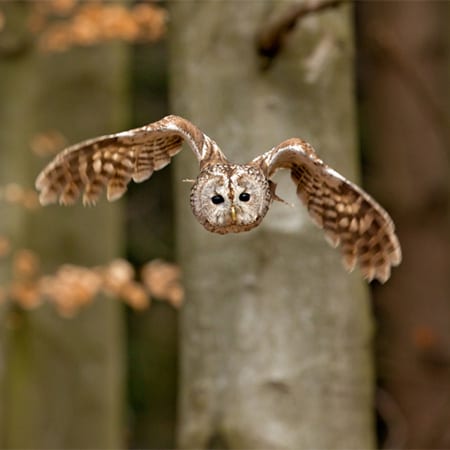
Tawny owl (Strix aluco)
How to recognise them
Tawny owls are generally dappled chestnut-brown in colour, with a round head and big, round, black eyes facing forward, and the females are a bit larger than males. This colouration makes them tricky to spot up in the canopies, but their vocalisations often betray their localisation.
They are especially vocal during late autumn and winter months, looking for mates before their breeding season kicks off early in the year.
Where they can be found
You can often hear them after dark in parks, woodlands and rural areas around the UK, minus Ireland and offshore islands such as the Isles of Man and Wight, as well as the Outer Hebrides, Orkney and Shetland. It is thought tawny owls dislike crossing large bodies of water, which is why they are only found on mainland UK.
Habitat they like
Deciduous, broad-leafed woodlands are preferred, but they can also be found among conifers, as well as large rural or suburban gardens.
What they eat
Tawny owls mainly prey on small mammals, such as mice and voles, but they also take small birds, amphibians, insects and even earthworms. They are intelligent and opportunistic and can be seen grabbing goldfish from garden ponds and even bats coming out from their roosts.
Any special characteristics
Their round head and body and black, round eyes make them unmistakable.
Their calls are completely unique, too, and easy to identify.
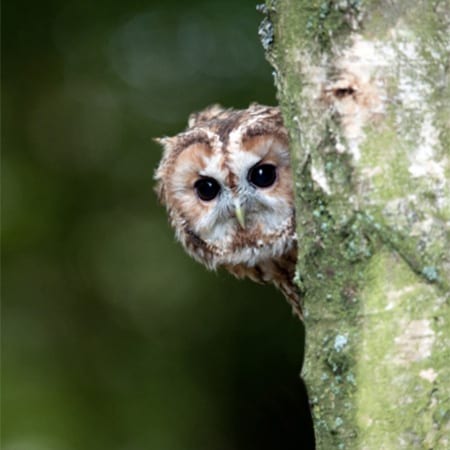
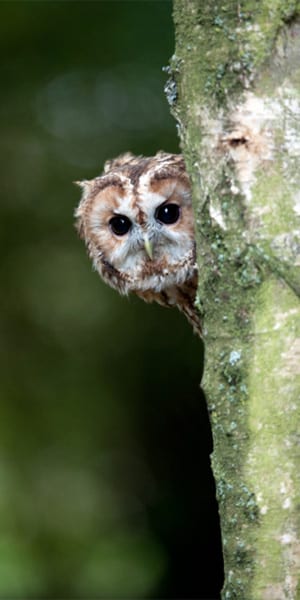
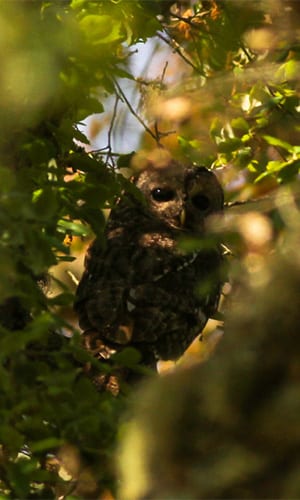
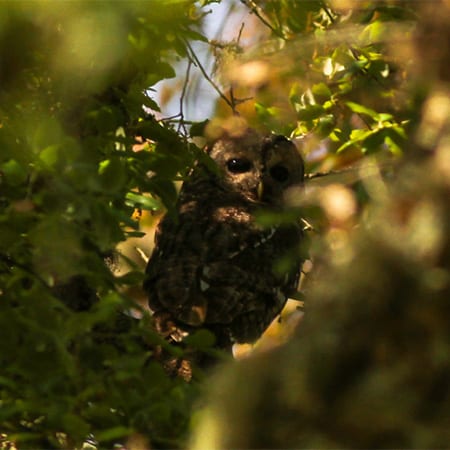
Their conservation status
In 2015, the tawny owl was moved onto the amber list of Birds of Conservation Concern. Long-term population decline has been a concern, mainly due to habitat loss, persecution and use of pesticides on their core prey species.
This prompted the BTO to undertake a survey, which was completed in 2019.
Any projects BASC is involved which benefit/protect them
While tawny owls usually nest in tree holes, they do readily take to nest boxes too.
BASC North has been running a bird nest box scheme, for a number of years, while the owl and kestrel nesting boxes are a new venture that launched in 2020. It is primarily aimed at barn owl and kestrel recovery, but these boxes can be used by a multitude of owl and raptor species.
BASC North has donated boxes to local shoots as part of their conservation program and are planning to install some at a couple schools and at a wood managed by a local environmental charity. If you would like to discuss the project, or need advice on nest box plans, please contact BASC North here hyperlink to BASC North page
You can find tawny owl nest box plans on the BTO website too.
Breeding information
Once paired up early in the year, tawny owls stay on their breeding territories for the whole year, guarding it from any unwanted visitors with warning calls and even visual displays. The eggs can be laid very early, from February onwards.
Interestingly, tawny owls start incubating as soon as the first egg has been laid, which leads to ‘asynchronous’ hatching – this means chicks won’t hatch at the same time. This helps the owls ensure the survival of at least one chick. They usually lay clutches of 2 to 3 eggs and incubation takes 30 days.
Other interesting information
- In almost every horror movie with any scenes in dark, mysterious forests or hair-rising cemeteries, you will hear an absolutely unmistakable hooting of an owl – nine times out of ten it will be this little guy – the tawny owl – because their calls are perfect for horrors!
- You can call them to you at night – use the squeaky ‘keewik’ call of a female and if you do it right, they’ll soon respond. Careful though, you don’t want to get them too worked up.
- While their average lifespan is only 4 years, one of the ringed birds found was aged 23 years, 5 months and 27 days back in 2016!
- A prominent bird photographer, Eric Hosking lost an eye to a tawny owl – that photo has been fittingly named ‘an eye for a bird’.
- Tawny owls are known for their aggression, especially when protecting their young – bird ringers often wear helmets and visors to protect them from angry parents.
- Like all other owls, tawny owls glide through the air completely soundlessly.
- Tawny owls don’t seem to enjoy travelling – most birds are found around 1km away from the ringing sites!
- They are extremely hard to count, so their breeding population number in the UK is more of a guesstimate…standing at around 20,000 pairs.
